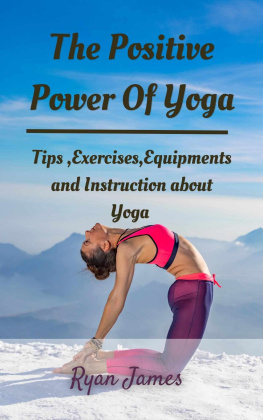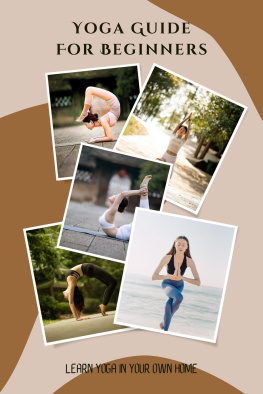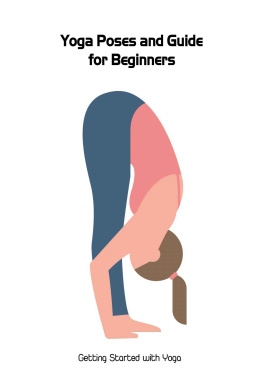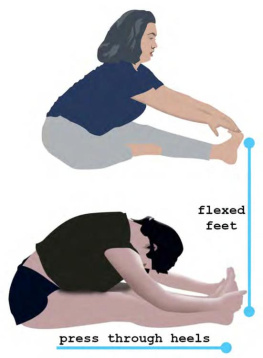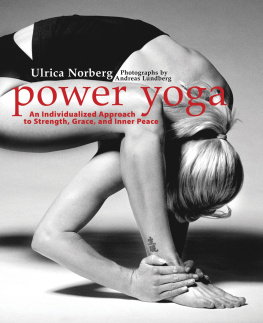Of course, yoga is usually associated with practical exercises and you too are reading this book in order to be able to acquire as much knowledge as possible about individual variants. It can still be very interesting to find out about the origins of this way of life and art in order to gain some background knowledge.
It is initially interesting where yoga comes from and in what context it came about, because yoga really does not remind us of our hectic way of life, which prevails in the western world. You will also learn how yoga became so popular and you will learn a few basic concepts that you as a practitioner should know. So embark on a journey through the wonderful world of a philosophy of life that can change your life.
Emergence and Origin
Yoga originated in the area of today's India and is a kind of philosophical teaching like in Europe, for example, the Stoa. It originated around 3,000 - 4,000 years ago and has been known ever since. The term yoga itself comes from Sanskrit and means something like binding together or tensing, but can also be interpreted as union or integration, which expresses the bringing together of body and soul.
According to philosophy, it is only through this union that one can become one with God. The representatives of Indian philosophy were called yogis and their teachings were not primarily concerned with promoting people's health and growing old. The yogis were much more concerned with meditating in order to be able to sit in the lotus position for as long as possible. This seat and other exercises, which were gradually developed, promoted the suppleness and mobility of the body in such a way that the mind could also be calmed. The lotus position is like a cross-legged position, as one would say in Europe, but the posture of the upper body should be kept as straight as possible.
Yoga is one of the six classical schools of Indian philosophy. These schools are also often called darshanas and there are many different types and forms of yoga, which also teach different practices and philosophies.
The type of yoga that is very popular especially in our climes and in North America is asana, which stands for the physical exercises. Asana is one of the paths taught by Patanjali. Patanjali was an Indian scholar and author of the Yoga Sutra. He probably lived in the 2nd century BC. and wrote this classic guide to yoga, which is why he is often referred to as the founder and father of modern yoga. Even if many people nowadays follow the asana, the other seven of the eight paths are also very relevant, especially if you want to strive for a higher level of serenity with this philosophy of life.
According to Patanjali, the eightfold path consists first of Yama, which requires correct social behavior in society and thus non-violence, non-stealing, sense control, incorruptibility and truthfulness. The second path is Niyama, which articulates personal rules of life. These include contentment, spiritual study, self-discipline, devotion, and purity. The third path is then the already mentioned asana, as far as body control is concerned. Pranayama is the fourth path, which is all about controlling energy through breathing techniques. Not to be confused with the fifth path, pratyahara. The aim is to develop the ability to direct the mind from the outside world inwards. The sixth path is Dharana, which concerns concentration, the seventh Dhyana, which relates to meditation and samadhi the last and eighth path which relates to contemplation. Contemplation in this context means a kind of looking at things in a concentrated attitude, through which one can attain pure cognition.
Today's Popularity
As already mentioned, the philosophy of yoga is several thousand years old and has of course changed again and again during this time. This happened not least because the users, i.e. mankind itself, have changed and developed again and again. If this philosophy is now described as a science, it is more likely to be regarded as a living science, i.e. a science that is oriented towards the needs and further developments of mankind.
Therefore, yoga today can no longer be compared one-to-one with the yoga practiced several thousand years ago. So today you can no longer understand what yoga looked like back then and how it was practiced.
Today's trend, which is taking on global proportions, was primarily shaped in the 19th century by Swami Sivananda, who initially worked as a doctor but then dedicated his life to the spiritual path. He published over 300 works on the subject of yoga and explained the teachings from a medical point of view. In addition, the works were accessible to the general public and also understandable because Sivananda presented them in clear language. He founded a so-called yoga academy and set up the first ashram. An ashram is a place or place where yoga can not only be practiced but also taught. Practitioners not only stay here temporarily, but also live there in order to indulge in spiritual development. In 1935 Swami Sivananda then founded the so-called Divine Life Society, which in German means something like company of divine life. This society aims to devote itself entirely to the ideals of purity, truth, non-violence and self-realization. These first attempts to make yoga a social movement also originated in India, more precisely in Rishikesh, which still serves as a place of pilgrimage today.
Swami Vishnudevananda, a student of Swami Sivananda, then spread the philosophy of yoga all over the world. In 1957 he traveled the world and first came to San Francisco, which was the starting point for a trip through the USA. This journey lasted for several years, during which time he taught yoga, specifically asana, throughout the United States. As already mentioned, asana refers to the physical aspects and elaborations of yoga and in particular it is about sitting and body positions. In the course of this, Vishnudevananda also established yoga centers in which yoga is taught to this day. He also made a strong case for world peace and advocated a global community. For example, in 1971 he launched a peacekeeping mission, flying to hotspots around the world in a small plane.
By getting to know the western world, yoga could be adapted to a new way of life and a life full of peace and serenity could be proclaimed. This image of yoga is still in our heads today and if you confront a person who has nothing to do with yoga, he will still know the peaceful starting point of this philosophy.
Yoga and Religion
Today, the philosophy of yoga is equated with a religion by many practitioners. It must be said clearly and unequivocally that yoga is not a religion, although there are many religious aspects and topics that are addressed in the teaching. A religion is a type of denomination that one joins and commits to certain things. This always includes scholars such as priests or pastors, who count as mediators of the respective faith. Yoga does not need such an infrastructure, because it is rather exercises that should lead to several goals. These goals are relaxation, serenity and harmony.
However, there is no denying that yoga has had and still has some influence from religions, but also that religions are influenced by yoga. As already mentioned, the origins of yoga come from India and thus the religions and philosophies there have always influenced each other. Many different religions exist in India, but each has its own things in common with yoga. There are similarities with Buddhism, Parsis, Jainism and Hinduism. Not every one of these religions has to tell you something and you certainly don't have to deal with them.

